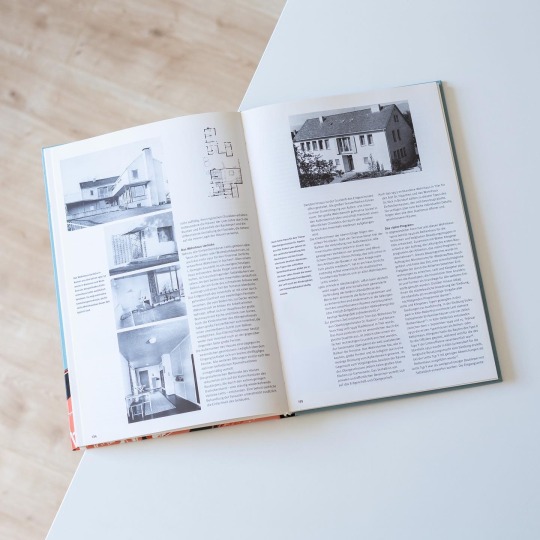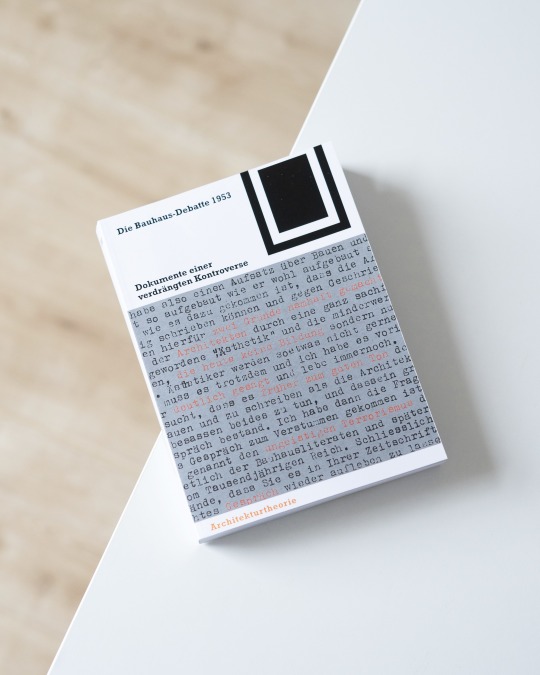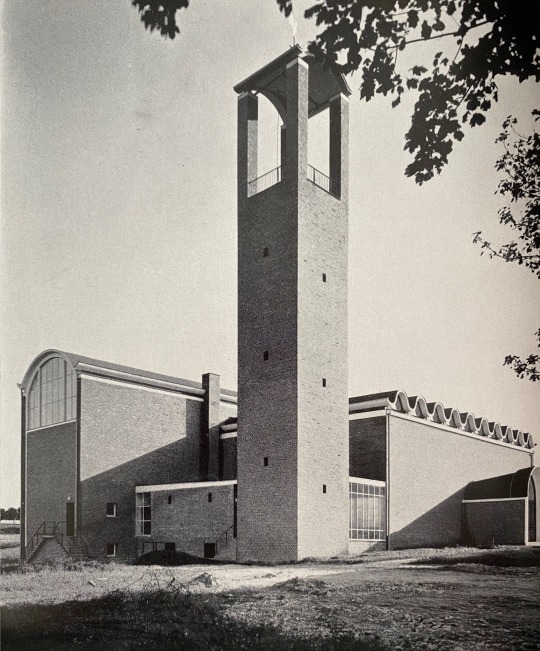#alfons leitl
Text

Church St Heinrich (1964-70) in Cologne, Germany, by Alfons Leitl
#1960s#church#concrete#brick#architecture#germany#nachkriegsarchitektur#nachkriegsmoderne#architektur#cologne#alfons leitl
168 notes
·
View notes
Text

Church St Valerius (1953-54) in Trier, Germany, by Alfons Leitl
#1950s#church#brick#architecture#germany#nachkriegsmoderne#nachkriegsarchitektur#architektur#trier#alfons leitl
93 notes
·
View notes
Text

Kagraner Anger Parish Church (1969-70) in Vienna, Austria, by Alfons & Florian Leitl
46 notes
·
View notes
Text


From a present-day perspective Alfons Leitl’s (1909-75) path towards architecture seems quite unusual: instead of studying architecture Leitl in 1928 started an apprenticeship at Bauwelt Verlag in Berlin, the leading publisher of architecture magazines in Germany. The magazines „Bauwelt“ and „Monatshefte für Baukunst und Städtebau“ were mouthpieces of modern architecture in Germany and Leitl naturally inhaled the latter with fervor. By the early 1930s he had risen to the rank of editor covering topics related to the building industry and in this capacity also established himself as an expert of industrialized building. This expertise turned out to be very convenient during the years of WWII: in 1940 Leitl entered Herbert Rimpl’s office, a common „refuge“ for modern architects since the office primarily worked on industrial projects where a modern design language was still allowed. Here Leitl soon was in charge of industrialized building.
Soon after the end of the war Leitl started to revive his journalistic work, an effort that in 1947 resulted in the establishment of „Baukunst und Werkform“, Germany’s most important postwar architecture magazine and the forerunner of the later „Bauwelt“. At the same time and upon the recommendation of Hans Schwippert Leitl became responsible architect for the reconstruction and urban planning of the Lower Rhine town of Rheydt, an experience he later also applied in the cities of Wesel and Trier. During these years he also established himself as an architect of a „revised modernism“ who adhered to modern construction principles but put particular emphasis on the humane and a homely atmosphere. These characteristics are most pronounced in Leitl’s many church designs as well as his occasional single-family homes.
All of the above has been set down by Johannes Busmann in his 1995 monograph “Die revidierte Moderne. Der Architekt Alfons Leitl 1909-1975”, still the only comprehensive account of Leitl’s life and work. Although the book would have benefitted from a more careful editing it nonetheless is a diverting read that also comes with a handy and helpful work catalogue that allows for a complete appreciation of Leitl’s architecture.
#alfons leitl#architecture#germany#nachkriegsarchitektur#nachkriegsmoderne#architecture book#book#monograph#vintage book
18 notes
·
View notes
Photo

In 1953 Rudolf Schwarz with a single polemic essay provoked a lasting quarrel about the Bauhaus, the architecture associated with it and the materialism he saw embodied by it: captioned after Goethe’s bon mot „Bilde Künstler, rede nicht“ Schwarz launched a frontal attack at Walter Gropius and the historical amnesia of him and his adepts. Published in „Baukunst und Werkform“, then the voice of progressive architects, Schwarz’ essay was met with numerous rebuttals that also aimed at the author as an agent of a different kind of modernism. The ensuing debate has been retrospectively documented in the present Bauwelt Fundamente issue „Die Bauhaus-Debatte 1953 - Dokumente diner verdrängten Kontroverse“, published by Birkhäuser in 2000. The book first and foremost contains documents surrounding the debate, i.e. correspondences and letters from readers that illustrate the visible debate argued out in „Baukunst und Werkform“ but also behind the scenes exchanges between Gropius and his allies as well as Schwarz, the magazine’s editor Alfons Leitl and Schwarz’ supporters. What unfolds is a clash of cultures that, although not fought as fiercely and ideologically charged as the Bauhaus controversy of the 1920s in Weimar, uncovers a divide in postwar German architecture: while the one faction offers unreserved support for Gropius/the Bauhaus and criticizes Schwarz as reactionary, the other faction defends the latter’s legitimate criticism that is overlayed by his harsh diction that e.g. denies Gropius the capability of fundamental thinking.
But although Schwarz fought with a sharp blade Gropius himself reacted rather calmly and also Schwarz, who apparently enjoyed the confrontation, in the course of the debate cooled down.
In summary the little book is a comprehensive sourcebook to a debate that so shortly after WWII had to be fought and unveiled that despite numerous disagreements the path of modern architecture in both camps was never left.
#bauhaus#rudolf schwarz#alfons leitl#walter gropius#architectural history#architecture book#book#birkhäuser
36 notes
·
View notes
Photo

Synagogue (1957) in Trier, Germany, by Alfons Leitl
#1950s#synagogue#architecture#germany#nachkriegsmoderne#nachkriegsarchitektur#architektur#trier#alfons leitl
109 notes
·
View notes
Text

Church St Sebastian (1954) in Aachen, Germany, by Alfons Leitl
#1950s#church#brick#architecture#germany#nachkriegsmoderne#nachkriegsarchitektur#architektur#aachen#alfons leitl
103 notes
·
View notes
Photo

Church and Community Center “Blut Christi” (1962-67) in Vienna, Austria, by Alfons Leitl
273 notes
·
View notes
Photo

Municipal Library (1956-60) in Trier, Germany, by Alfons Leitl
#1950s#library#concrete#architecture#germany#nachkriegsmoderne#nachkriegsarchitektur#architektur#trier#alfons leitl
96 notes
·
View notes
Photo

Church St Barbara (1954-55) in Mülheim, Germany, by Alfons Leitl
#1950s#church#brick#architecture#germany#alfons leitl#nachkriegsmoderne#nachkriegsarchitektur#architektur#mülheim/ruhr
38 notes
·
View notes
Photo

Municipal Library (1956-60) in Trier, Germany, by Alfons Leitl
#1950s#library#concrete#architecture#germany#nachkriegsmoderne#nachkriegsarchitektur#architektur#alfons leitl#trier
191 notes
·
View notes